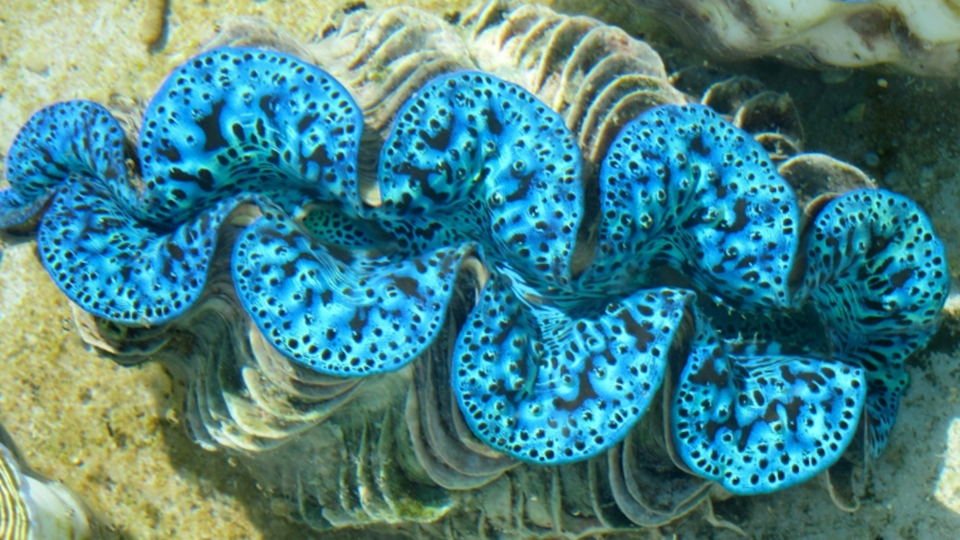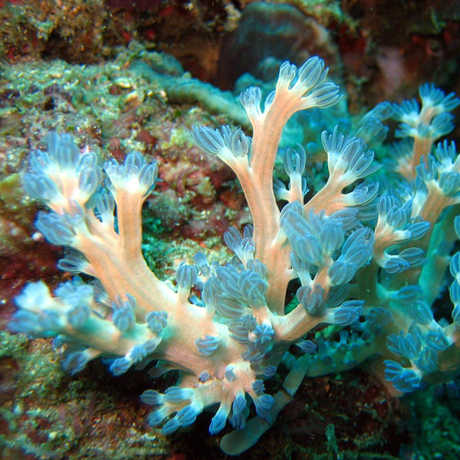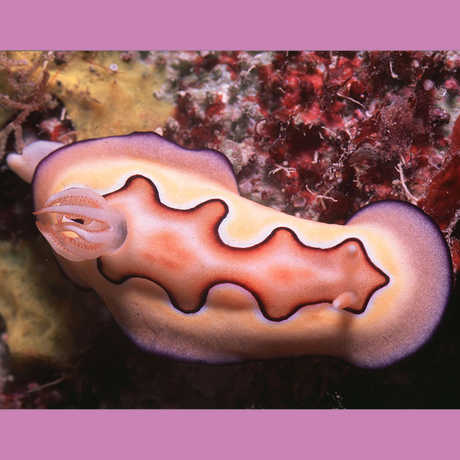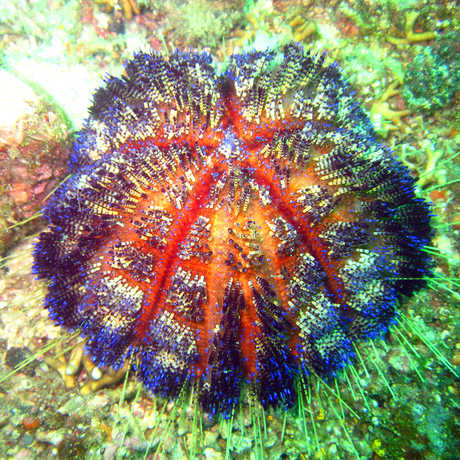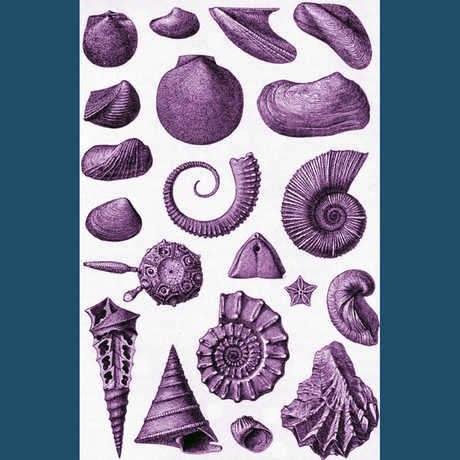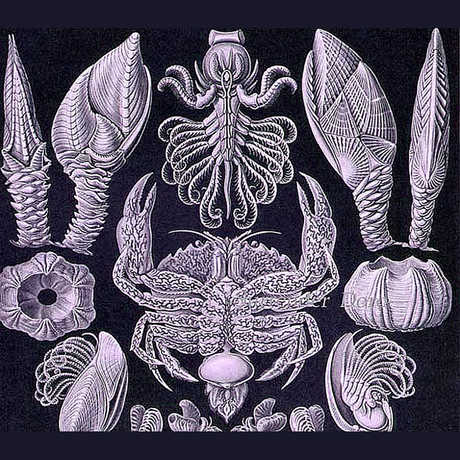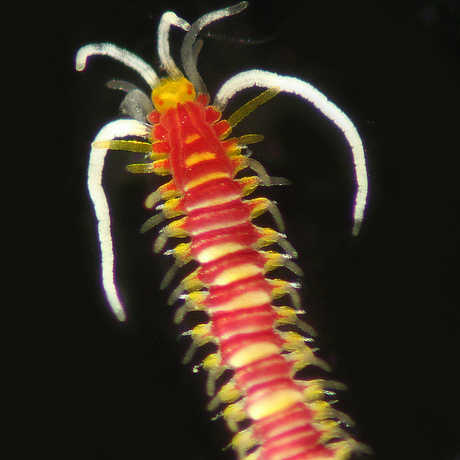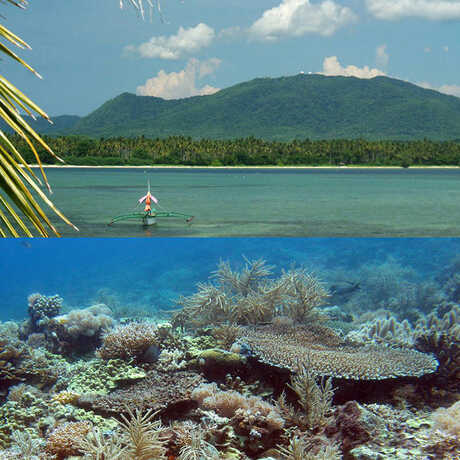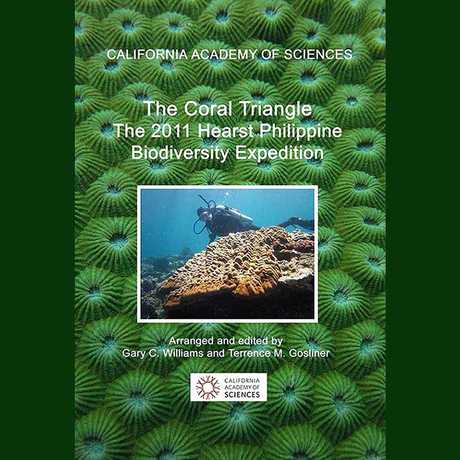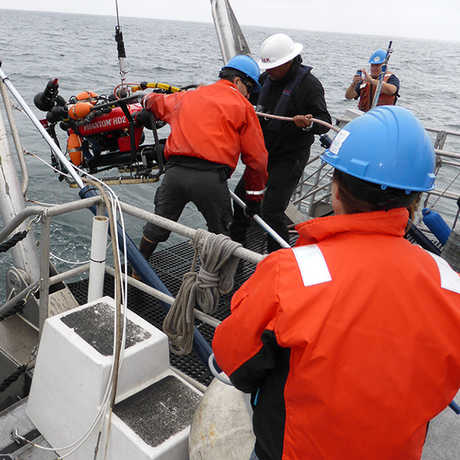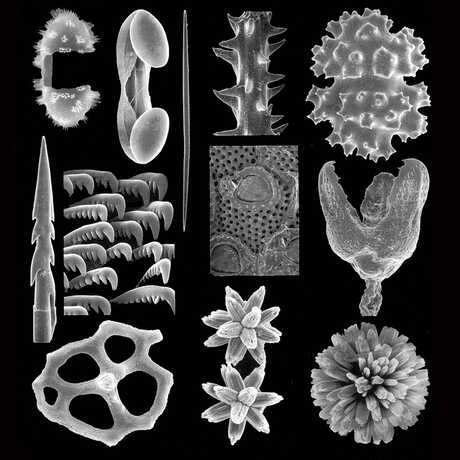The octocorals include some of the most beautiful and morphologically diverse animals in the oceans - the soft corals, sea fans, and sea pens. They are a group of corals characterized by eight feathery tentacles surrounding the mouth of each polyp. Dr. Gary Williams maintains the Octocoral Research Center lab in the Department of Invertebrate Zoology and Geology, that also has large coral collections spanning a worldwide geographic coverage.
Coral reefs are located in shallow waters of tropical and subtropical regions - which provide marine waters, warm temperatures and sunlight. The organisms that build coral reefs are corals that house algal symbionts within their tissues.
Most corals are not coral reef builders but rather inhabit the deeper part of the oceans and are worldwide, from polar seas to the tropics. Some deep-sea corals have been found in the very deepest regions of the world's oceans.
